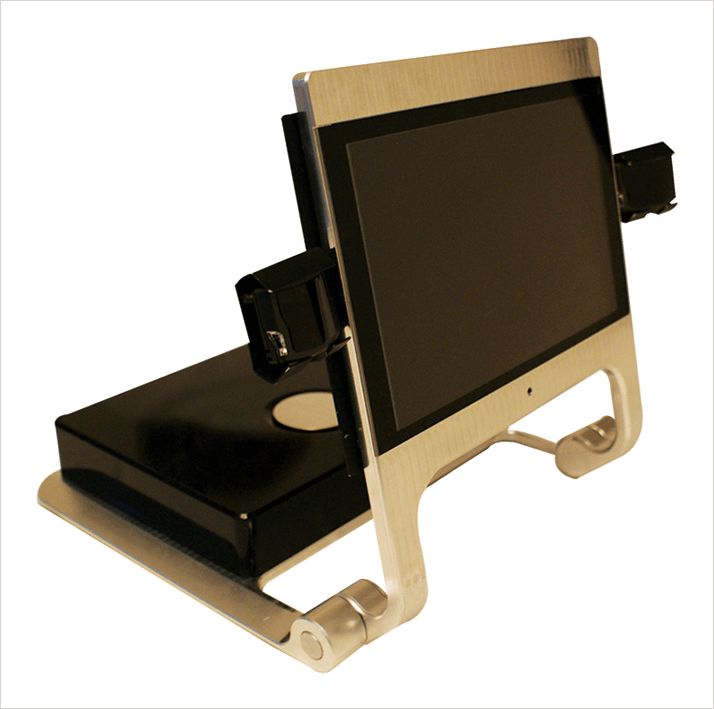
- Premium, multifocal IOLs are excellent
- A standard test for visual acuity of IOL patients is needed
- The Salzburg Reading Desk is a good candidate for this role
- SRD provides precise visual acuity at various illumination and contrast levels
The last decade has seen great advances in cataract and refractive surgery; these have allowed us to set a goal, for most patients, for a visual acuity of at least 20/25 lines (0.1 logMAR).
In terms of assessing the performance of modern multifocal intraocular lenses (MIOL) we really should assess visual acuity across multiple distances – far, intermediate and near. This should be done before MIOL implantation, to determine which lens best matches the patient’s needs, and after implantation, to measure the success of the intervention. Regrettably, there is no consensus in international ophthalmological practice on the best way to do this: different testing methods have been approved and are in use around the globe. The approaches vary with regard to the tested distance, letter size and distance between each of the letters. It is left up to each physician to decide what assessment method to use – and it appears to me to be a purely subjective choice.
In terms of assessing the performance of modern multifocal intraocular lenses (MIOL) we really should assess visual acuity across multiple distances – far, intermediate and near. This should be done before MIOL implantation, to determine which lens best matches the patient’s needs, and after implantation, to measure the success of the intervention. Regrettably, there is no consensus in international ophthalmological practice on the best way to do this: different testing methods have been approved and are in use around the globe. The approaches vary with regard to the tested distance, letter size and distance between each of the letters. It is left up to each physician to decide what assessment method to use – and it appears to me to be a purely subjective choice.
The latest developments in MIOL optics complicate things still further. There are different near additions for refractive and diffractive optical systems, as well as their combinations, and some of the newer MIOLs are trifocal. These make intermediate and near visual acuity testing especially fraught, complicating the creation of uniform (and international) standards. The calculated focus points in acuity tests are dependent not only on the actual near addition of the MIOL but also on its how effectively the lens is positioned. There’s also the patient factor to consider: their needs and habits must be at the forefront of our considerations. This means paying attention to aspects of their everyday life, such as optimizing individual working distances to achieve the maximal improvement in quality of life.
My modest proposal to achieve this is to use the Salzburg Reading Desk (SRD), an excellent method for testing near and intermediate visual acuity that was developed by Günther Grabner and Alois Dexl. Beside the typical measurements in set distances, this aperture can also measure individual distances for near and intermediate visual acuity. Rather than making patients read out single letters or numbers from a chart, the SRD uses whole sentences that patients have to read out – and the SRD evaluates the reading speed and acuity (as distance-corrected logMAR) of each patient automatically. Furthermore, luminance and contrast settings can be varied so that each patient’s individual contrast sensitivity can be defined.
Grabner described the SRD thus: “This is the first system that allows for rapid, precise and unbiased comparison of different surgical techniques for the correction of presbyopia – not just with IOLs, but also interventions like corneal inlays or even scleral techniques.” He also noted that, “The same holds true for the evaluation of reading ability after different anti-VEGF treatment schedules, an aspect of clinical retinal studies that has not undergone intense scrutiny to date.” Dexl reinforced the point that, “each patient can use their own, subjectively convenient, reading distance and reading performance parameters”, meaning that patients aren’t having to strain to read a chart six metres away. While a uniform, robust approach to measuring visual acuity still seems to be a long way off, I believe that we are headed in the right direction with technologies like the SRD. It provides a standardized platform that gives us the information we need and enables us to tailor what we do to the particular needs of each patient. Technologies like SRD help us to practice ophthalmology better by assisting us in providing a truly personalized service.
